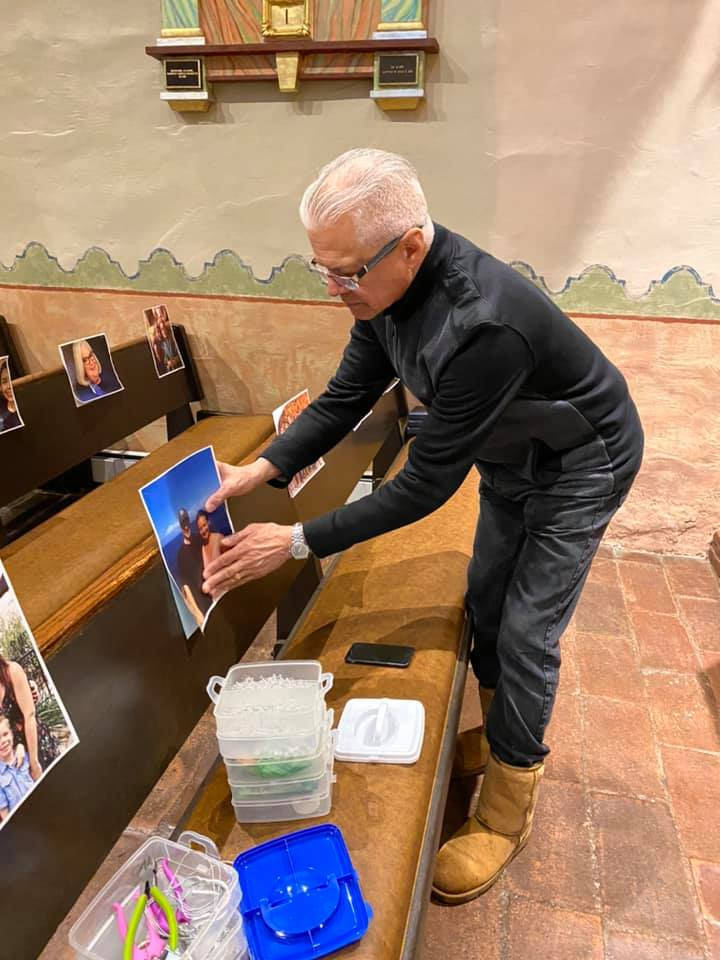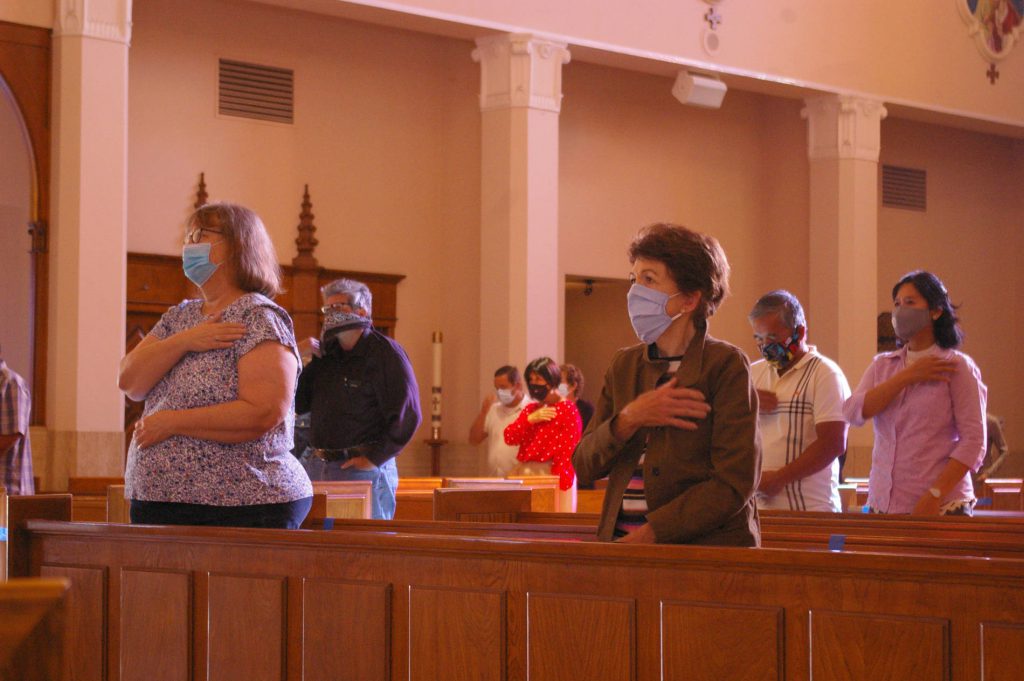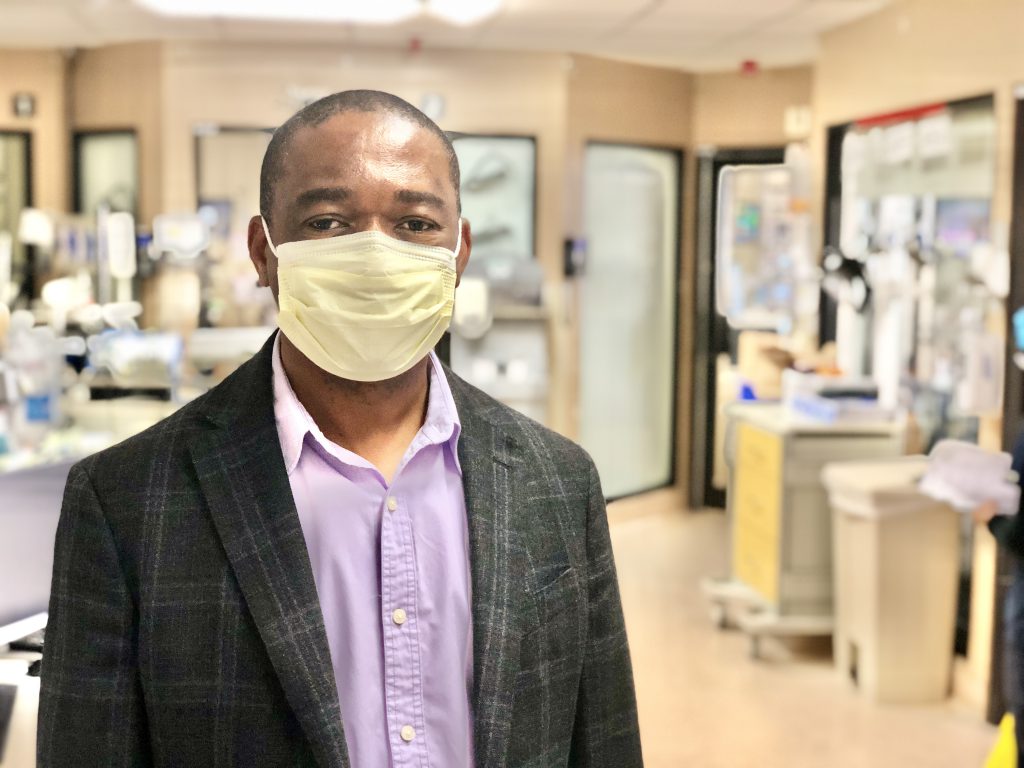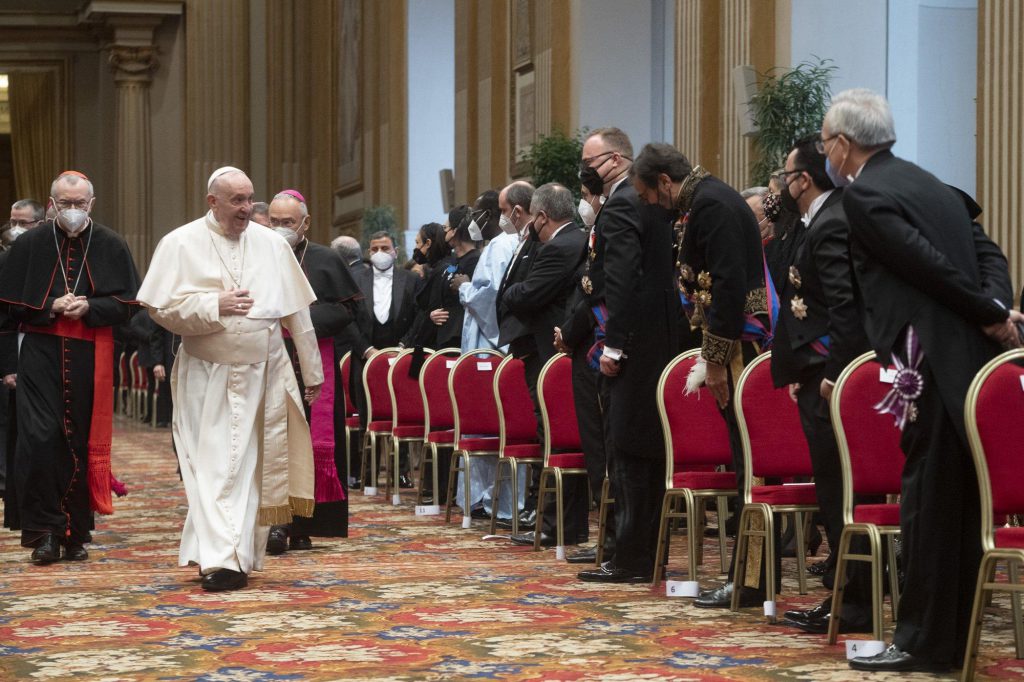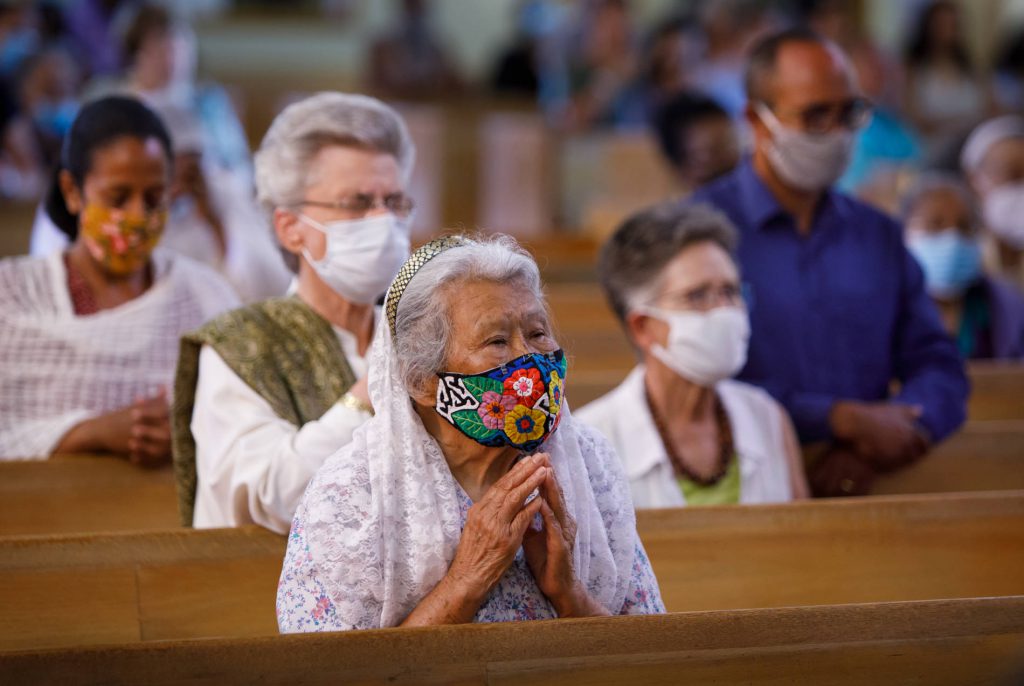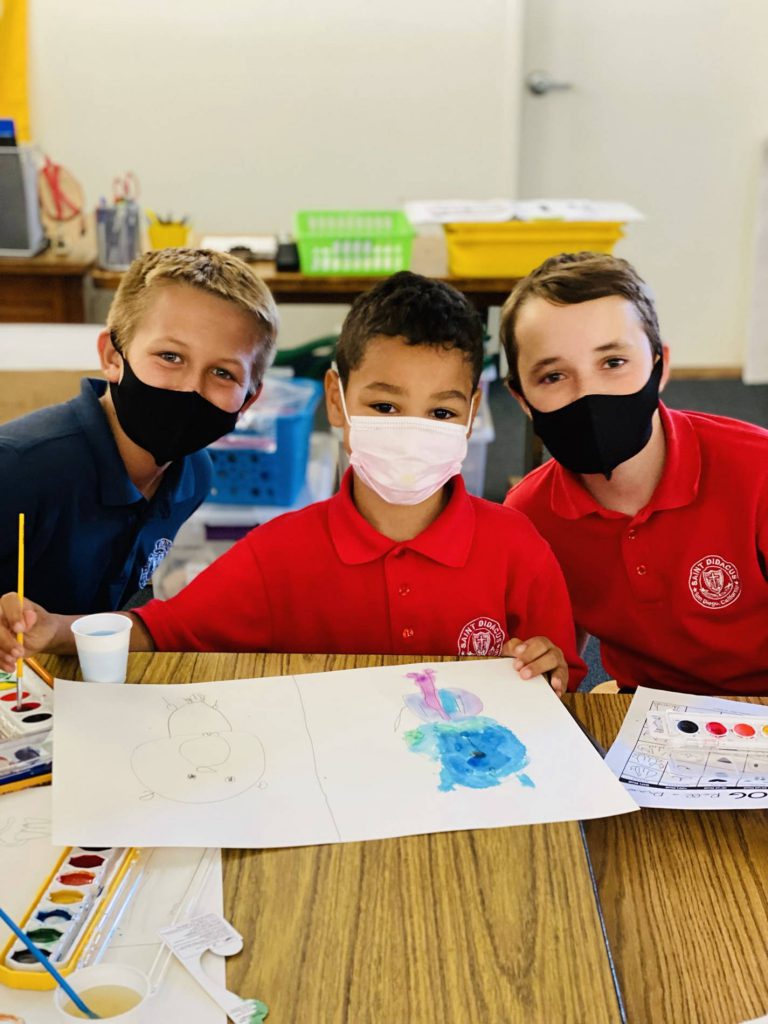During pandemic, parishes support faith and foster community with livestreamed Masses, virtual Bible studies and more
SAN DIEGO — With all public Masses and other church events canceled until the COVID-19 pandemic has run its course, local Catholic parishes have had to find new ways to provide parishioners with spiritual nourishment and a sense of community.
Parishes throughout the diocese have met that challenge by quickly, enthusiastically and effectively embracing technology.
Across the board, there has been a notable increase in social media activity and the use of digital communications by parishes.
Many have been offering livestreamed or recorded Masses. At some, this was offered on a more limited basis, but at others, it has been a weekly or even daily occurrence. Many parishes are celebrating online Masses in both English and Spanish, and one has even been offering a Sunday Mass in Vietnamese.
In addition to Masses, some added virtual Stations of the Cross, rosaries, Divine Mercy chaplets and other devotions.
Meanwhile, videoconferencing platforms like Zoom have enabled parish ministries — prayer groups, youth and young adult groups, marriage preparation programs, and the Rite of Christian Initiation of Adults (RCIA) to name a few — to continue meeting even as members respect social distancing requirements.
Along the way, many priests have distinguished themselves by venturing far outside their comfort zones. And parishes, discovering the benefits of new technology, are already anticipating ways to incorporate it into post-pandemic parish life.
Flocknote, a texting and email service for churches, has proven helpful for many parishes at the present time as a means of steady communication with parishioners and a way to share timely information.
Father Matthew Spahr, pastor of The Immaculata Parish, said the number of his parishioners who were signed up for Flocknote jumped from about 400 to 1,200 once it was made clear that this would be the parish’s primary means of communication with its parishioners.
Unlike many parishes, The Immaculata had already been in the practice of recording Masses. It started about a year ago, primarily as a way to reach homebound parishioners.
But despite having grown accustomed to celebrating Mass with cameras rolling, Father Spahr said that “presiding over an empty church” has felt strange in recent weeks. He chuckled, noting that he has found himself uncertain where to look.
“Mass is kind of a dialogue between the presider and the assembly,” he said, “and not to have that feedback from the assembly was very off-putting, very disconcerting.”
For Father Alex De Paulis, pastor of St. Vincent de Paul Parish in Mission Hills, recorded Masses were very much something new. In fact, when he had been approached in the past about recording his Masses or homilies, he always declined. He said the knowledge that he is being recorded makes him “self-conscious” and takes him “out of the preaching zone.”
But, faced with the cancellation of public Masses, he almost immediately began recording. Today, the parish’s Masses are livestreamed Monday through Friday, and Sunday Masses are professionally recorded and edited by a parish volunteer.
For Father Eduardo Bernardino, pastor of Resurrection Parish in Escondido, celebrating Mass inside his empty church was not uncomfortable at all. He knew his parishioners would be watching his recorded Masses and tried to stay aware of that connection at all times.
“When I celebrate the Mass I try to feel the presence of the congregation, even if they are not there,” said Father Bernardino, who has been recording Sunday Masses “so that the people can also feel that we are united, maybe not sacramentally, but spiritually at least.”
Father Patrick Mulcahy, pastor of Mary Star of the Sea Parish in La Jolla, has been livestreaming both daily and Sunday Masses. He conceded that, with so many other parishes broadcasting liturgies, it would not have been hard to simply direct parishioners to one of those.
But he felt it was important for them to be connected to “their second home, their own parish church.”
“This gives them a small sense of normalcy and familiarity,” said Father Mulcahy, who films his Masses on his iPhone, steadied by the tripod he purchased for this very purpose.
In addition to his own parishioners, he said, the livestreamed Masses have also been viewed by many others who have become “regular participants from faraway places.”
Father Edward Horning, pastor of the three parishes that comprise the Catholic Communities of Brawley and Westmorland, has similarly found himself with new virtual worshippers from beyond his parish boundaries: A small Hispanic parish in Nevada, whose one parish priest contracted COVID-19, started tuning in to his Masses, which he livestreams daily on Facebook.
Father Michael Ratajczak, pastor of St. Thomas More Parish in Oceanside, said the first few Masses he recorded were a little challenging. It felt awkward as he tried to be “a little bit animated” but “with nobody there.” Father Corey Tufford, associate pastor of St. Pius X Parish in Chula Vista, also acknowledged that being “alone in the chapel with just a couple of cameras pointed at you” did not feel normal. But both priests were buoyed by the appreciative comments they received from parishioners.
Some of the responses to the phenomenon of online Masses can be cited as proof that local Catholics have not lost their sense of humor during this challenging time.
For example, an Immaculata parishioner told Father Spahr that one benefit of the current situation is that he is able to push the fast-forward button, an option that is not available when attending Mass in person. Father Ratajczak said he and his parish staff had joked that visitors to the parish website could theoretically “binge-watch” all of the recorded Triduum liturgies on Easter Monday.
But, humor aside, pastors are hearing the message that Catholics are truly missing the Eucharist and the fellowship they enjoyed when they were able to attend Mass.
Father De Paulis said parishioners have told him that, while they love the recorded Masses, it is “not the same” and they “just miss being there.”
Father Ratajczak likened the present moment to a fast and predicted that it will “help us better appreciate the feast.”
Though livestreamed and recorded liturgies have been able to recreate — to a certain degree, at least — the experience of attending Mass at one’s home parish, what about the sense of community and fellowship?
Cody Charfauros, a member of Our Lady of Perpetual Help Parish in Lakeside who volunteers to film that parish’s livestreamed Mass, said his parish received at least “a small glimmer of that” on Palm Sunday.
Several members of the parish each recorded 10- to 15-second videos of themselves wishing their fellow parishioners a blessed Holy Week, he said. Those videos were then edited together into a four-minute video that played before the livestream of Palm Sunday Mass. It was a big hit.
“Everybody feels very disconnected and, as great as it is to witness the Mass itself,” he said, the missing piece was “the ‘coffee-and-donuts,’ community aspect.”
Charfauros said that parishioners have grown so accustomed to livestreamed Masses now that they have begun requesting specific camera angles and expressing preferences for particular online viewing platforms.
At the same time, while Father Tufford believes that a majority of his parishioners are sufficiently tech-savvy, he knows that others are not.
“Those who struggle with technology are on my mind, as well,” he said. “We need to be mindful of them and continue traditional means of reaching out, like phone calls and mailings.”
Just as technology has allowed them to share their liturgies virtually, parishes have also been using videoconferencing platforms to keep their ministries going.
“It’s so funny,” said Father Spahr. “Most of us didn’t even know about Zoom a couple weeks ago, and now we’re using it for almost everything.”
The Immaculata Young Adults group has continued holding its weekly Bible study from 7-8:30 p.m. on Thursdays via Zoom.
Group member Joe Quiroz said that, with young adults unable to receive the Body of Christ sacramentally, the group’s virtual Bible studies offer “the next best thing”: an experience of the Body of Christ in the form of Christian community.
The format has changed somewhat in its online iteration. Whereas the in-person Bible studies often began with a few minutes of socializing before moving on to reflection on the upcoming Sunday’s Mass readings, that socializing now takes up a much larger percentage of the time.
“We really had to focus on the community aspect, because I think that that’s what people are missing now,” said Arianna Calio, another member of Immaculata Young Adults.
She added that there is “a ton of resources online right now,” but “they’re not getting the community that they’re used to.”
The Zoom-based Bible studies have yielded some unexpected positive results.
Quiroz said former members of the group who have moved away were able to take part in recent virtual sessions, which provided an opportunity “to reconnect with friends who are not just down the street but across the country.”
Two families with young children, who cannot attend the group’s in-person Bible studies because it conflicts with their children’s bedtimes, were also able to attend virtually.
Calio said this brought to her attention a need that she had been entirely unaware of and had shown her a way to address it.
Evelyn Beale, coordinator of youth and young adult ministry at St. Luke Parish in El Cajon, is also having a positive experience with young adult ministry through Zoom.
Her young adult ministry group had been collaborating with its counterparts at other East County parishes on a Lenten Bible study series.
The meetings transitioned online the week before California Gov. Gavin Newsom issued his stay-at-home order, she said.
“The young adult deanery virtual gatherings have actually been going better than I could have imagined,” said Beale. “We are getting more people participating than we expected, and even some new faces each week.”
The meetings are “such a grace,” she said, and “something the young adults say they look forward to every week.”
Beale said participants have decided to continue the Zoom-based gatherings for as long as the stay-at-home order is in place and to organize a social outing for East County young adults once social distancing is no longer required.
Not that the pandemic has been convenient for anyone, but the virus’ arrival came at a particularly inopportune time for Imperial Valley Young Adult Ministry, a regional group that represents all of the Catholic parishes of Imperial County.
At the time, the group had been hosting a Bible study on the first and third Mondays of the month, held at 6:30 p.m. at St. Anthony of Padua Parish in Imperial. It also had planned to begin holding “Jesus & Java,” a free event featuring a guest speaker and caffeinated beverages at a local coffee shop, on a monthly basis.
“I was afraid that we had just started to gain momentum within the last six months … and the fire everyone was starting to feel might die out,” said Brianah Wong, the group’s coordinator.
But, after transitioning to Zoom on March 23, the Bible study has not only been able to continue virtually, but it is now meeting even more often.
“So much in the news is shocking and scary, and we hold something consistent, fruitful and fun, something that offers community, when community is restricted during this time,” said Wong. “It doesn’t feel like an effort to keep the group going, or to move from two meetings a month to meeting every week, because we understand now more than ever the hunger for the Lord, and having this group feeds that hunger and strengthens the desire to be in communion again.”
Our Lady of Perpetual Help’s Living in the Trinity ministry for married couples with school-age children is another example of a ministry that is thriving with virtual gatherings.
Before COVID-19, group members had met for coffee and donuts after the 9 a.m. Sunday Mass. While their children were busy in faith-formation class, they would delve deeper into that week’s Mass readings or make use of other faith resources.
The stay-at-home order hasn’t stopped Living in the Trinity’s get-togethers; it has simply shifted them to Zoom.
“That’s been amazing,” said Charfauros, who is on the group’s leadership team. “We still get to see everybody, we still get to share about our weeks, and our faith, and the struggle that we’re all going through.”
Teresa O. Moya, director of evangelization and catechetical ministry for the Catholic Communities of Brawley and Westmorland, and her team of catechists have been able to keep their parish’s faith-formation program going by adopting a distance learning model. Parish youth, for example, have been using Google Classroom to watch educational videos and to receive and turn in weekly assignments.
As of mid-April, other faith-formation programming for the Catholic Communities of Brawley and Westmorland was soon to be offered online as well. Online sacramental preparation for reconciliation and First Holy Communion was being developed, and there were plans for online RCIA formation and Spanish-language marriage preparation.
Eventually, the COVID-19 virus will run its course. But now that many pastors and parishioners have seen the benefits of technology, will they want to stick with it? Do they see a role for it even after churches reopen and parish life goes back to normal?
“I absolutely see us integrating this in our ministry going forward,” Father Mulcahy said, while acknowledging that technology would be a supplement, not a substitute.
Father Spahr said the current situation, as difficult as it is, is “really teaching us how to minister to people.”
“I think there’s so much more we could be doing for our homebound,” he said. In addition to visiting their homes and bringing them the Eucharist, he added, “Why couldn’t they be brought into a Bible study? Why couldn’t we be broadcasting more of our parish offerings? Every talk, every presentation could be streamed for people who can’t make it.”




